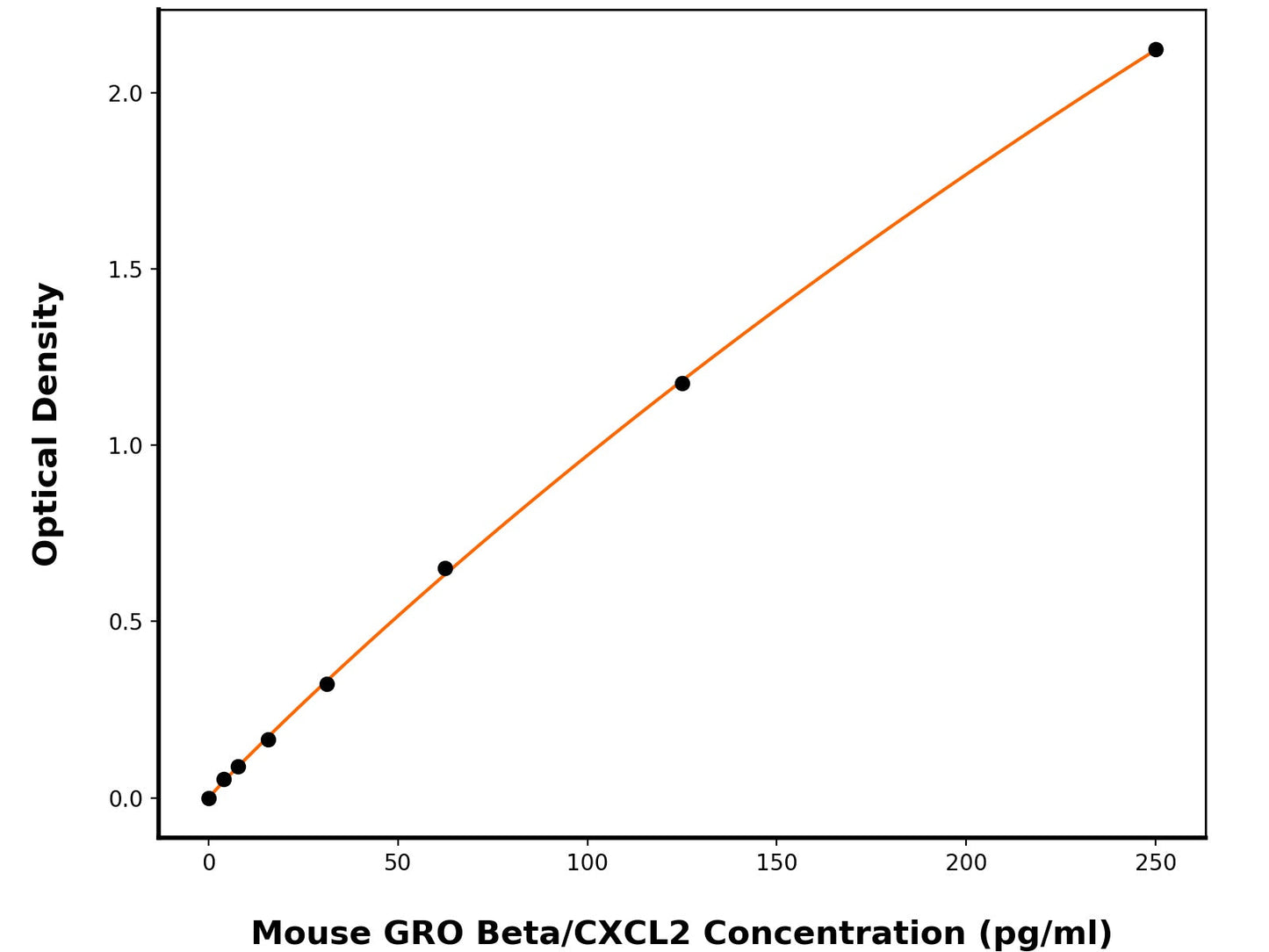1
/
of
1
Mouse C-X-C Motif Chemokine 2 (CXCL2) ELISA Kit
Mouse C-X-C Motif Chemokine 2 (CXCL2) ELISA Kit
This ELISA kit is designed to detect Mouse C-X-C Motif Chemokine 2 (Mouse CXCL2). The assay plate has been pre-coated with mouse anti-Mouse GRO Beta monoclonal antibody. When the sample containing GRO Beta is added to the plate, it binds to the antibodies coated on the wells. Then, a horseradish peroxidase conjugated mouse anti-Mouse GRO Beta Antibody is added to the wells and binds to GRO Beta in the sample. After washing the wells, substrate solutions are added, and the color intensity is directly proportional to the amount of Mouse GRO Beta present. The reaction is stopped by adding an acidic stop solution, and the absorbance is measured at 450 nm.
Catalog No:
BPE285
Regular price
$624.00 USD
Regular price
$480.00 USD
Sale price
$624.00 USD
Unit price
/
per
2 weeks
Couldn't load pickup availability
Product Details
Species Reactivity
Mouse
Sensitivity
1.51 pg/mL
Detection Range
3.91-250 pg/mL
Sample Type
Serum, plasma, cell culture supernates
Incubation(s)
3.5 hour(s)
Research Areas
Neuroscience, Immunology
Background
Chemokine (C-X-C motif) ligand 2 (CXCL2), also called macrophage inflammatory protein 2 (MIP-2), Growth-regulated protein beta (Gro-beta) and Gro oncogene-2 (Gro-2), is a small cytokine belonging to the CXC chemokine family. CXCL2/MIP-2 is selectively up-regulated in tolerance-conferring APCs and serves to recruit NKT cells to the splenic marginal zone, where they form clusters with APCs and T cells. In the absence of the high-affinity receptor for CXCL2/MIP-2 or in the presence of a blocking Ab to CXCL2/MIP-2, peripheral tolerance is prevented, and Ag-specific T regulatory cells are not generated. CXCL2/MIP-2 is selectively up-regulated in tolerance-conferring APCs and serves to recruit NKT cells to the splenic marginal zone, where they form clusters with APCs and T cells. In the absence of the high-affinity receptor for MIP-2 (as in CXCR2-deficient mice) or in the presence of a blocking Ab to MIP-2, peripheral tolerance is prevented, and Ag-specific T regulatory cells are not generated. Understanding the regulation of lymphocyte traffic during tolerance induction may lead to novel therapies for autoimmunity, graft acceptance, and tumor rejection. Several studies have implicated the CXCL2 chemokine as a mediator in the development of sepsis. CXCL2/MIP-2 also plays a major role in mediating the neutrophilic inflammatory response of the rodent lung to particles such as quartz, crocidolite asbestos, as well as high doses of other relative innocuous dusts such as titanium dioxide.
Shipping Condition
Shipped on cold gel packs.
Storage Condition and Shelf Life
This product can be stored at 2-8C.
Analyte
C-X-C motif chemokine 2
Regulatory Status
For Research Use Only

